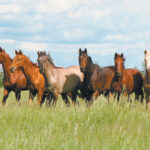Horses will occasionally give their head a shake for normal reasons. A flick of the neck can dislodge flies. The occasional shake can indicate discomfort from bits and other tack. A head and neck roll may be a body language expression to other horses. But a small number of horses experience shaking to a pathological […] Read more
Stories by Jamie Rothenburger, DVM
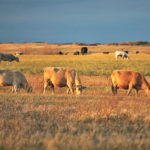
Vitamin E deficiency common in prairie livestock
Throughout the body, vitamins serve crucial functions to maintain cells in a state of health. Perhaps unimaginatively named for the letters of the alphabet, the vitamins are A, B, C, D and E. Vitamin K breaks the order but is no less important. A recent conversation with a fellow veterinarian led me to review the […] Read more

Pneumonia in horses can compromise athletic ability
Through evolution, horses have developed a tremendous capacity for running at sustained, high speeds. To meet these athletic demands, horses have remarkably large lungs and heart. Those organs must be healthy. With each heartbeat, blood courses through the lungs, exhausting carbon dioxide and refreshing its oxygen load before travelling around the blood vessels to oxygenate […] Read more
Connections explored between brains and sleep
As a veterinary pathologist, I hold the brains of animals in my hands almost every week. A cat brain fits comfortably in the palm of my hand, while the brain of a 1,000 pound feedlot steer needs a two-handed grip. Removing a brain involves opening the skull and then carefully severing the 12 pairs of […] Read more

Outbreaks of sudden death in wild birds tough to solve
It is a sight no one wishes to see. This winter, more than 50 dead ducks were discovered in one of Calgary’s parks. The people who found them were understandably upset. They were also concerned about the cause. Could it be poison? Or an outbreak of some type of infectious disease? Did a deadly bird […] Read more
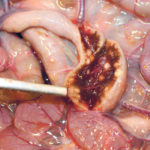
Caseous lymphadenitis causes big losses in sheep, goats
One of the most important infectious diseases of sheep and goats is caseous lymphadenitis (also called cheesy gland), a disease caused by the bacterium Corynebacterium pseudotuberculosis. As far as bacteria go, it is a tough, nasty pathogen. Infected individuals are not able to clear the bacteria from their system, leading to chronic infections. The bacteria […] Read more
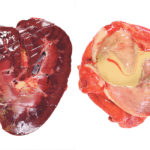
Kidney disease in horses is a rare but serious condition
In the animal world, cats are the species most often affected by chronic kidney disease. But slow deterioration of the kidney can occur in any animal, including horses. Kidneys are vital organs that have many important bodily functions. This pair of dark red organs sits tucked up along the lower back. They filter out nitrogen […] Read more
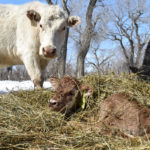
Abnormal development results in many calf problems
With calving season upon us again, I’ve been reflecting on the wide range of things that can go wrong in fetal development. Abnormalities can affect any system in the body and range in severity. The most serious and severe abnormalities cause spontaneous abortion or neonatal death. Others are mundane and are only detected by chance. […] Read more
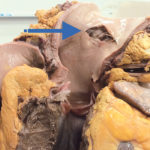
Physiological adaptation makes horses top athletes
Among animals, horses are remarkably adapted to thrive in a wide variety of climates and environments, including some of the more extreme places on Earth. For example, a herd of horses occupies Sable Island, one of Canada’s newest national parks. The horses have lived on the island off the coast of Nova Scotia since the […] Read more
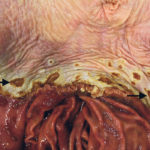
Stomach ulcers are major ailment in performance horses
Horses are susceptible to stomach ulcers, especially if they work hard in performance activities such as racing, jumping and showing. An ulcer develops when the thin stomach lining is lost, leaving the underlying stomach wall exposed. The lost layer normally protects the delicate underlayers from stomach acid and abrasive food items such as coarse grasses. […] Read more

